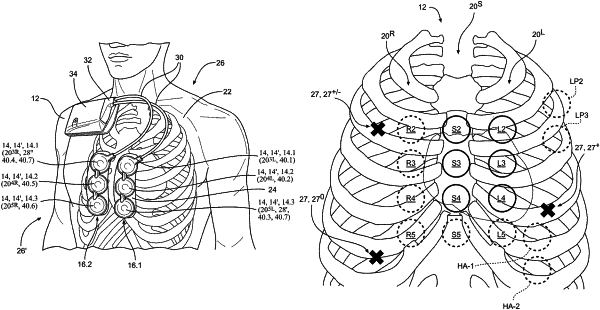| CPC A61B 5/7203 (2013.01) [A61B 5/318 (2021.01); A61B 5/721 (2013.01); A61B 5/7225 (2013.01); A61B 5/7257 (2013.01); A61B 7/04 (2013.01); H03G 3/30 (2013.01); H04R 1/46 (2013.01); H04R 3/04 (2013.01); A61B 5/6823 (2013.01); A61B 2562/0204 (2013.01); A61B 2562/0219 (2013.01); H03F 3/45 (2013.01); H03F 2203/45151 (2013.01); H03F 2203/45156 (2013.01)] | 21 Claims |

|
1. A method of receiving and processing at least one auscultatory sound signal from a corresponding at least one auscultatory sound-or-vibration sensor, comprising:
a. placing the corresponding at least one auscultatory sound-or-vibration sensor in proximity to a corresponding sound generator;
b. applying an auscultatory sound-or-vibration sensor electronic test signal to said corresponding sound generator, wherein said auscultatory sound-or-vibration sensor electronic test signal comprises a plurality of frequency components, each frequency component of said plurality of frequency components comprises an integral number of wavelengths, and each said frequency component is deterministically terminated following a duration of time corresponding to said integral number of wavelengths of said frequency component after said frequency component of said auscultatory sound-or-vibration sensor electronic test signal is applied to said corresponding sound generator;
c. generating an acoustic sound signal from said corresponding sound generator responsive to said auscultatory sound-or-vibration sensor electronic test signal;
d. exposing said corresponding at least one auscultatory sound-or-vibration sensor to said acoustic sound signal and receiving a corresponding at least one auscultatory sound signal responsive thereto; and
e. determining whether or not said corresponding at least one auscultatory sound-or-vibration sensor is functioning properly responsive to an analysis of a Fourier Transform of said corresponding at least one auscultatory sound signal.
|